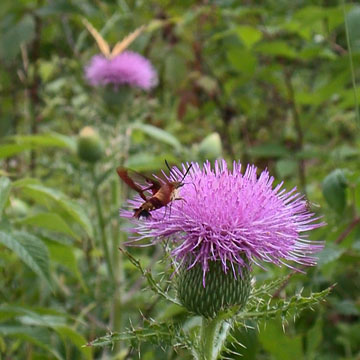

Cirsium pumilum - (image 1 of 6)
Taxonomy
Family: Asteraceae
Habitat
Pastures, old fields, open woods.
Associates
Distribution
Southern ME to western NY, south to DE, PA, and in mountains to VA, eastern WV, and NC.
Morphology
Monocarpic biennial, sometimes perennial by offshoots from base of plant; stem 30-80 cm, few branched; leaves lobed or pinnatifid, with numerous short marginal spines and scattered longer ones; basal leaves well-developed and generally persistent, 12-25 cm long; cauline leaves not crowded except towards the base; heads few or solitary, large, the involucres 3.5-5 cm, usually some of the bracts with a narrow, glutinous dorsal ridge; middle and outer involucral bracts tipped by a short, more or less erect spine; inner bracts elongate, with expanded, chartaceous, crisped and erose tip; flowers purple (white), sweetly fragrant; achenes 3-4 mm.
Notes
Flowers June to September
Wetland indicator: NA
An attractive species with larger flower heads than other thistles. Forms a large rosette of mostly glabrous leaves in the first year. The leaves produced in the spring of the second year tend to be more hairy, at least initially. Plants flower in the second year, set seed, then usually die, though occasionally new rosettes can form from the parent plant.
Cirsium hillii is a rare, closely related species sometimes treated as a variety of C. pumilum that is perennial from long, thickened, hollow roots and found primarily in prairies from southern Ontario to PA, west to MN and SD.
References
Gleason, Henry A. and A. Cronquist. 1991. Manual of Vascular Plants of
Northeastern United States and Adjacent Canada. Second Ed.
The New York Botanical Garden. Bronx, NY
|
Michael Hough © 2018 |